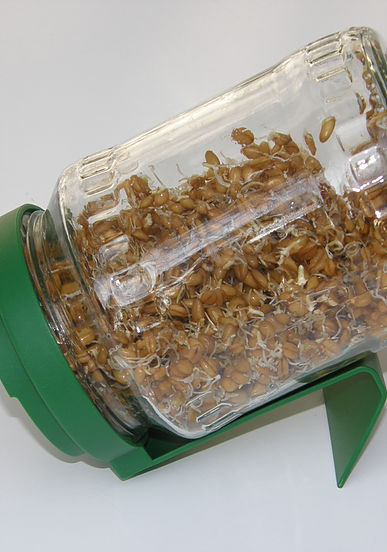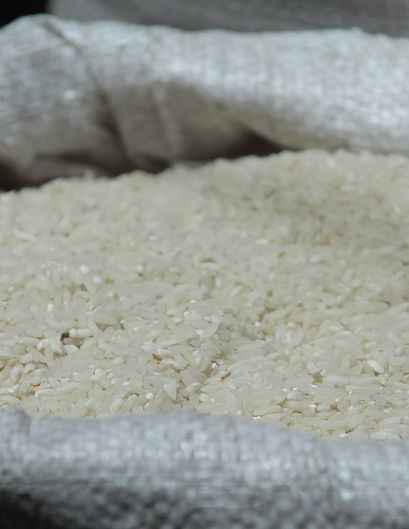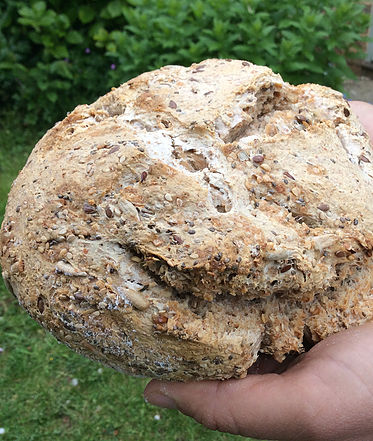Basics
The power of water –
Soaking and Activating
Nuts, beans, seeds and legumes are an integral part of any plant-based diet. But if you want to really take advantage of them, nothing beats a good soak.
Unless we grab and eat nuts directly from the tree, buying them long after the harvest means they are virtually in a deep slumber. They all contain natural substances keeping them from spontaneously sprouting and transforming into plants: phytic acid and enzyme inhibitors.
The phytic acid binds minerals in the digestive system, rendering them useless for the body. And enzyme inhibitors may also hinder our own enzymes from working properly.
The process of soaking away these substances is therefore also called activating. The “sleeping” grains are awakened and release their nutrients.
Each seed, each nut and legume differs in soaking time. But in order to simplify things, you can soak any of them overnight, preferably with warm salt water. Always rinse well.
With beans and legumes, you can add a piece of kombu to the soaking or even the cooking water. This alga has the power to neutralise gas producing components and thus improve digestibility significantly.
After soaking, seeds and nuts can be dried back in your dehydrator. Or let them sprout directly and enjoy them fresh.
At first glance, this all may sound rather cumbersome. But once you get used to the process, it takes no time at all. I made it a habit to always soak great amounts of nuts and seeds. Once dried back again, they are just as durable as before and I always have enough at hand, just in activated form.


Growing spouts
Your own tiny garden, all year round…!
Sprouts are tiny nutrient wonders: through sprouting, dormant seeds come to life and their nutrient content extends several-fold. Sprouts can be integrated into almost any dish and are able to turn the fastest food or even just a loaf of bread into a fulfilling healthy meal.
And sprouting is so easy, not to say much cheaper than buying ready-made sprouts plus it saves on packaging waste (plastic).
It works best in these sprouting jars. Actually, you only need to buy the lid (which you can order in health food stores as a spare part). The lids fit snuggly onto most jars you already have (e.g. from your coconut oil). This way, the whole endeavor is much cheaper and you up-cycle your empty glass jars.
Nut milk bags are a practical alternative for larger amounts of sprouts.
No matter what device you use, the procedure is always the same: first, the seeds are soaked overnight. Drain the water and for 2-3 times a day, rinse the sprouts under clean water (from your tap). You could of course refer to tables covering the individual sprouting time frame, but you can just as well see for yourself when the sprouts are ready. The rule of thumb: the nutrient content is highest when the seedling is about as big as the seed it came from.
After the last rinse, let the sprouts dry well; Then replace the sprouting lid with a real lid and place the jar in the refrigerator. Enjoy fresh and start your next batch right then!
How to become your own miller
Freshly ground flour is most valuable. As long as the grain is intact, all the nutrients are well protected. Once the grains are in ground form and in contact with light and air, those nutrients are released exceedingly fast.
In addition, grinding your own flour is cheap and saves space in the kitchen cabinet. Shop whole buckwheat and you have the choice to sprout it or process it into flour, rice grains can be cooked or ground, etc. You’re just more flexible: processed flour is just flour.
To grind the grains, just fill them into the dry (!) jug of your blender and hit go. You will hear when the flour is ready! In the beginning it is very loud. As soon as the noise winds down to a normal level and stays there, your freshly ground whole meal flour is ready.
If you need white flour, say for baking, just sift your flour through a very fine sieve. However, this is relatively time consuming. And I must confess, for the rare cases where I use white flour, I usually just buy it. Purchased flour is best kept in the refrigerator. Yes, you heard correctly. For one, this is the best place to protect it against vermin. And besides, it’s nice and dark, almost like inside the grain…


Fermentation
Fermentation is one of the oldest techniques of food preservation. Fermenting designates a conversion of organic matter by bacteria or fungi.
Fermenting has many advantages:
The process splits carbohydrates and proteins into easily digestible components (pre-digestion). With probiotic microorganisms fermented food is beneficial for the intestinal flora, and thus for the immune system. It also promotes all detoxification and purification processes in the body.
So there are plenty of good reasons to integrate fermented foods into the diet. For convenience products, you could call on miso or tamari.
But fermentation is a fairly simple process since the bacteria do all the work by themselves. Detailed instructions on how to ferment food yourself are added to my recipes for sourdough bread (translation will follow soon), cashew cheese and water-kefir (translation will follow soon).
How to make milk
It is much cheaper to produce oat milk, almond milk etc. yourself. When it comes down to it, you know exactly what’s in it and also save a lot on packaging waste.
In principle, the production of any type of nut and seed milk is the same and simple in itself. To any 140g of activated nuts or 250g of activated seeds add 1 liter filtered water, sweeteners if desired and 1 pinch of salt. Mix for about 30 seconds. Then squeeze through a nut milk bag – milk it. All done.
The bags can easily be bought online and they are just as suitable for sprouting, to ferment cashew cheese or filter water-kefir. They’re well worth your investment.
It is important that the seeds and nuts are raw, organic and completely untreated.
Building on the basic recipe, you can refine the different milks depending on your mood. For example: add spices.
I worked on my oat milk recipe for quite some time. The result speaks for itself! On the blog, you’ll also find a recipe the all-round talent cashew milk as well as my dearly beloved tigernut milk.
Happy milking!


